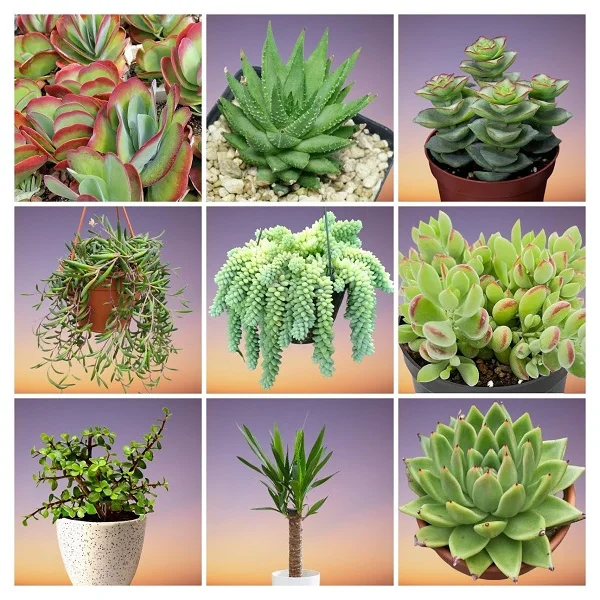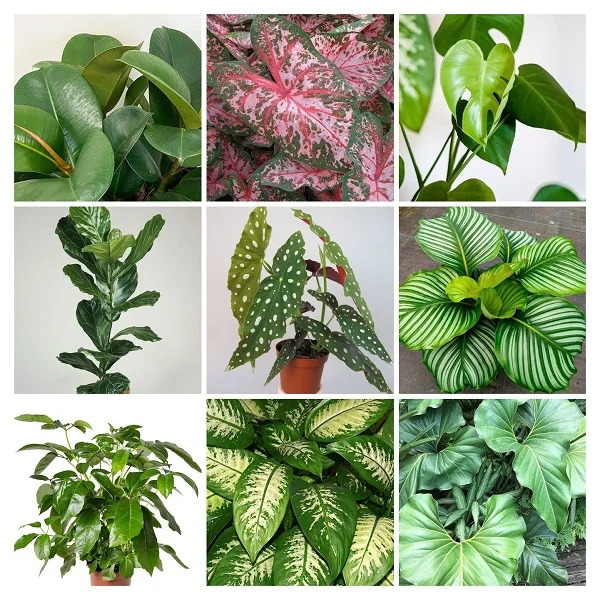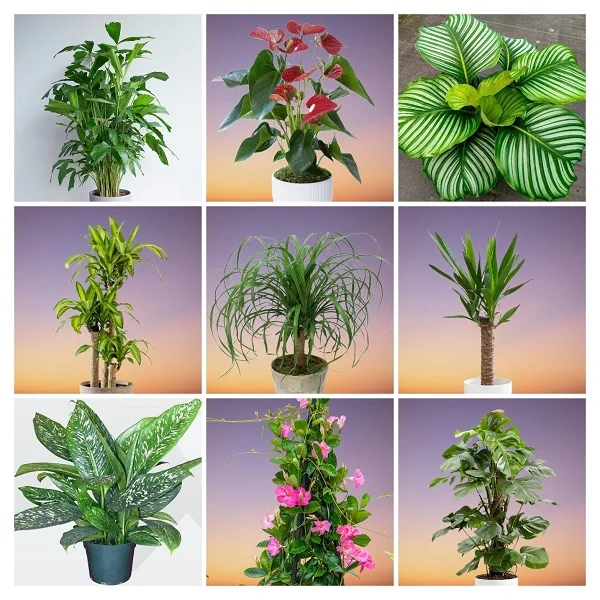Spineless Yucca (Yucca gigantea) Indoor Care and Common Problems with Solutions
Some links in this post may be affiliate links
Spineless Yucca (Yucca gigantea) grows best in very bright light with some direct sunlight, average warmth, moderate humidity and moderately moist, rich, well-drained soil coupled with monthly feeding in the growing season.
Spineless Yucca also called Soft-tip Yucca, Blue-stem Yucca, Giant Yucca, Yucca Cane and Itabo is one of the hard to kill plants for the home, office and other places.
Yucca gigantea is an ideal False Palm for a hallway or large space in which a woody trunk bears a crown of long, leathery, strap-like, spineless leaves and white bell-shaped flowers may appear on mature plants.
Blue-stem Yucca requires a deep, well-drained container and a well-lit spot with some sunshine to thrive placing it among the popular sun-loving plants for the home.
Giant Yucca can grow in a variety of soils and is drought-tolerant and is one of the plants with low water needs you may grow in any space.
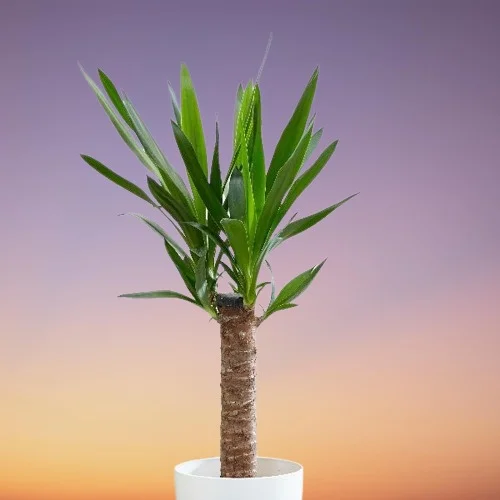
Botanical name: Yucca gigantea
Family: Asparagaceae
Common names: Spineless Yucca, Soft-tip Yucca, Blue-stem Yucca, Giant Yucca, Yucca Cane, Itabo
Origin
Yucca gigantea is native to Mexico and Central America where it grows in a hot semi-arid climate. In its natural habitat it can grow to a height of 30-40 feet.
Size
Spineless Yucca (Yucca gigantea) can grow to a height of 8-10 feet when grown indoors. On account of its size, it is one of the favored tree-like plants that will create a bold statement in any space.
Toxicity
Yucca gigantea is toxic to both humans and pets. If ingested, it can cause vomiting in cats and dogs and dermatitis and liver disease in horses. Keep the plant from the reach of children and pets.
Where to Buy
If you are looking to add Spineless Yucca to your plant collection, check them out on Etsy (Link to Etsy).
Yucca gigantea Care Indoors
Spineless Yucca (Yucca gigantea) requires very bright light with 6-8 hours of direct sunshine, average warmth of 16-280C, moderate humidity of 50-55% and moderately moist, well-drained, fertile, succulents mix coupled with monthly feeding during the growing season. Keep reading for more on these growing conditions and how to achieve them.
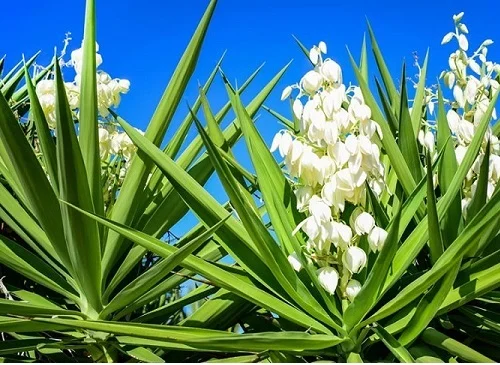
Light Requirements
Spineless Yucca grows best in bright light with 6-8 hours of morning or late afternoon sunshine. Keep it away from hot midday sunlight to avoid scorching.
You may also grow the plant under grow lights where the natural light is inadequate. Check out these full spectrum grow lights on Amazon.
Regularly rotate the pot to ensure that the plant receives sufficient light on all sides for uniform growth and prevent lopsided growth.
Blue-stem Yucca can also grow under direct sunshine but it needs to be acclimated gradually by exposing it to brighter light each day over a period of 2 weeks to avoid scorching.
Watering
How often do you water Spineless Yucca? Water Spineless Yucca liberally during the growing season while allowing the top 2-3 inches of soil to dry out between waterings to keep the soil moderately moist.
Significantly, reduce watering in the cold season to keep the soil slightly moist as growth is reduced at this time but do not let the soil dry out completely.
Confirm that the pot has a drainage hole to prevent the soil from getting soggy which can result in root-rot as the plant does not like to sit in waterlogged soil.
Regularly clean the leaves by damp-wiping with a soft cloth to discourage pests and diseases as well as get rid of dust to increase surface area for light absorption. Learn more on how to clean houseplants.
Temperature and Humidity
Average warmth within the range of 16-280C is ideal for Spineless Yucca. A room temperature that is comfortable for you is ideal for this plant. Keep it away from drafts to avoid sudden changes in temperatures as they can cause reduced growth and leaf drop.
Spineless Yucca has no need for extra humidity. Average room humidity of 50-55% is ideal for this plant. Ensure that there is good air circulation to prevent fungal diseases like leaf spot.
Fertilizer
Feed Spineless Yucca with a balanced, liquid fertilizer every 4 weeks during the growing period to promote a lush growth. Do not feed in the cold season as growth is minimal and feeding at this time may lead to fertilizer burn.
Potting Soil
The best soil for Spineless Yucca should be rich in organic matter, loose and free-draining to avoid getting soggy soil. The soil should be loose enough to allow water to drain out fast enough. Cactus and succulents mix is ideal for this plant as it drains easily.
Repotting
Repot Spineless Yucca during the growing season only when the plant has become pot-bound as it grows best when root-bound. Use a deep pot for the extensive root systems. The pot should be heavy to prevent it from toppling over as the plant can become top-heavy.
Make sure that the pot has a drainage hole to prevent the soil from getting soggy as it can lead to root-rot. Refresh the soil for the large plants by removing the top 2-4 inches of soil and replacing it with fresh soil. Check out these succulents pots available on Amazon.
Pruning
Pruning Spineless Yucca involves removal of dead and dry leaves to maintain the plant neat and discourage pest and disease infestations. To promote branching and control size, cutback the stem with a clean, sharp pair of pruning scissors at the desired level. New shoots will grow just below the cut to form a crown of leaves on the trunk.
The flowers can be removed at any time if desired. Cut away the flower stalk while leaving 3-4 inches of stalk attached to the trunk to avoid wounding the trunk which may result in fungal infections. Learn more on how to prune houseplants.
Propagation
Spineless Yucca (Yucca gigantea) propagation can be done at the beginning growing season from stem cuttings, offsets or seeds.
Read more on Spineless Yucca Propagation (4 Easy Propagation Methods).

Yucca gigantea Growing Problems and Remedies
Spineless Yucca (Yucca gigantea) has few problems. Most problems are caused by improper care. The problems include plant death, leaf spots and diseases. Read on for more on these problems, their remedies and solutions.
Plant dying
Plant death in Spineless Yucca is an indication of root-rot which is brought about by soggy soil. Remove the plant from its pot and treat it for the disease. Thereafter, ensure that the pot has a drainage hole to prevent the soil from getting soggy and reduce watering in the cold season. Learn how to treat root-rot in houseplants.
Brown, moist leaf spots
Brown, moist leaf spots in Spineless Yucca are an indication of leaf spot disease which is promoted by overdamp conditions coupled with poor air circulation. The disease may affect the appearance of the leaves but it does not affect the health of the plant. Isolate the affected plant and treat it for the disease.
Pests
Spineless Yucca is highly resistant to pests but weak plants can be attacked by scale insects, moth borers, weevils and mealybugs. Isolate the affected plant to prevent spread to other plants and treat with neem oil or insecticidal soap. Ensure to follow the manufacturer's instructions.
Frequently Asked Questions
1. Do Yuccas need full sun?
Yes. Yuccas grow best in very bright light with 6-8 hours of morning or late afternoon sunshine. They also grow under direct sunshine but they need to be gradually acclimated to growing in full sun.
2. How to make Yucca grow faster?
To make Yucca grow faster, give it the right growing conditions.
- Indoors, grow Yucca in very bright light with 6-8 hours of direct sunlight. Outdoors, it can grow under direct sun but it needs to be acclimated first.
- Maintain an average warmth between 16-280C and keep it away from cold drafts.
- Keep a moderate room humidity of 50-55%, it has no need for extra humidity.
- Give it well-drained, rich, succulents soil. Keep the soil moderately moist in the growing season and barely moist in the cold season.
- Feed it monthly with a balanced, liquid fertilizer during the growing season but do not feed in the cold season.
- Regularly remove dead and dry leaves to maintain the plant neat and also discourage pest and disease infestations.
- Repot Yucca during the growing season when it is pot-bound. Use a terracoat pot one size larger than the current one. Ensure that the pot has a drainage hole to avoid soggy soil as it can result in root-rot.
- Regularly inspect the plant for pests and diseases and carry out timely control measures.
3. Do Yucca plants multiply?
Yes. Yucca plants do produce pups or offsets at the base of mature plants. Seperate these offsets from the mother plant and plant them in individual pots to multiply your plants.
4. How do you promote new growth on Yucca?
To promote new growth on Yucca, cutback the stem at the desired level and new growth will sprout at a point just below the cut.
5. Should I remove dead Yucca leaves?
Yes. Remove dead Yucca leaves to maintain the plant neat as well as minimize pest and disease infestations. Pests and diseases hide and multiply on dead foliage, therefore, it is advisable to get rid of yellow leaves as soon as the appear.
6. How to prune Spineless Yucca?
Pruning Yucca is easy and is best done at the beginning of the growing season. To control size and rejuvenate growth, cutback the stem at the desired height to encourage growth of new shoots just below the cut.
7. Do Yucca plants need a lot of water?
No. In the growing season, Yucca plants need to be watered only when the top 2-3 inches of top soil have dried out to keep the soil moderately moist. In the cold season, very little water is needed to keep the soil barely moist.
8. Why are the leaves of my Yucca turning yellow?
The leaves of your Yucca may turning yellow due to overwatering, underwatering, root-rot, pests infestaions, inadequate light, improper feeding, poor soil quality among reasons.
9. What is the best fertilizer for Yucca plants?
The best fertilizer for Yucca Plants is a balanced, water soluble fertilizer applied every 4 weeks during the growing season only.
10. How do you propagate Spineless Yucca?
Spineless Yucca is propagated at the beginning of the growing season from seeds, offsets (pups) or stem cuttings. The easiest and fastest method of Yucca propagation is from offsets (pups).
You liked it? Share on social media.
Related Content
Amazon Associates Disclosure
Homeplantsguide.com is a participant in the Amazon Services LLC Associates Program, an affiliate advertising program designed to provide a means for sites to earn advertising fees by advertising and linking to amazon.com.



